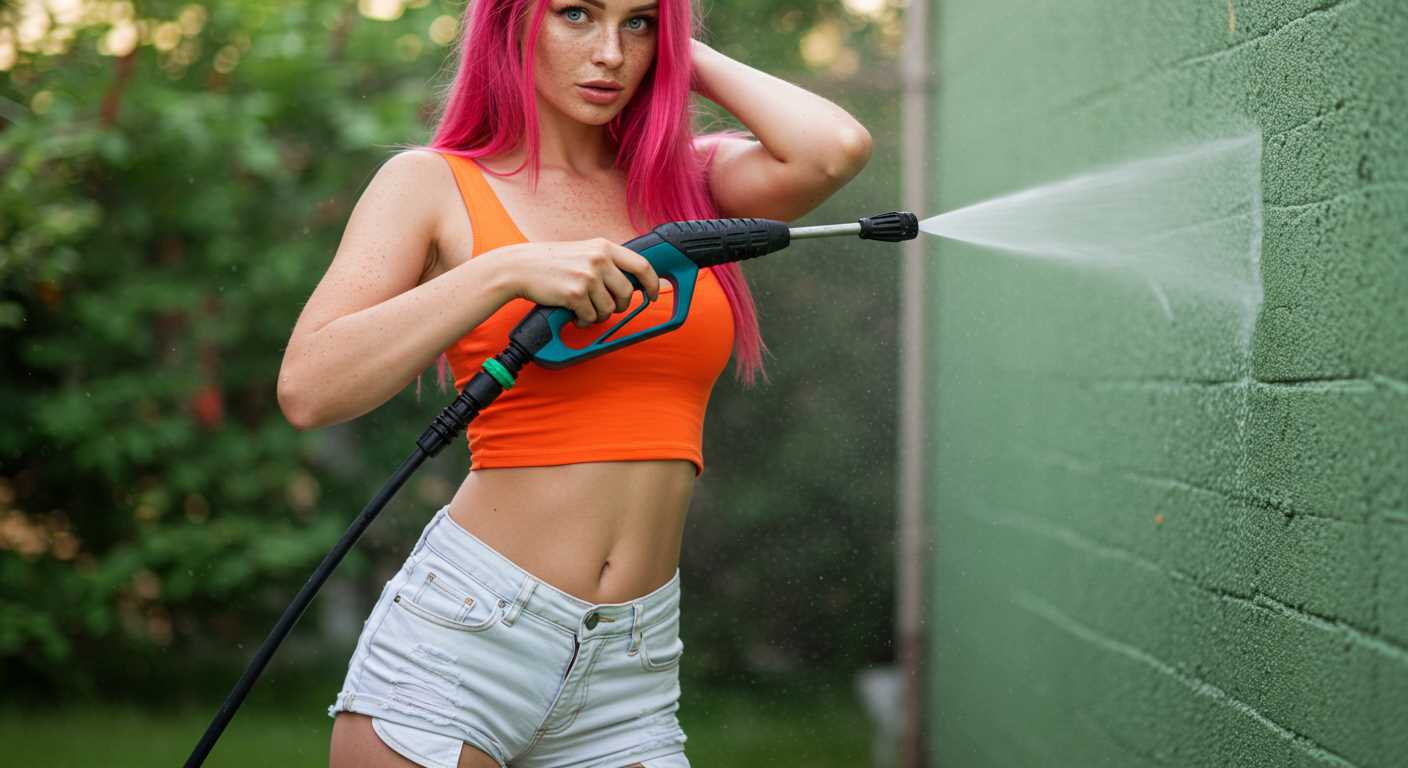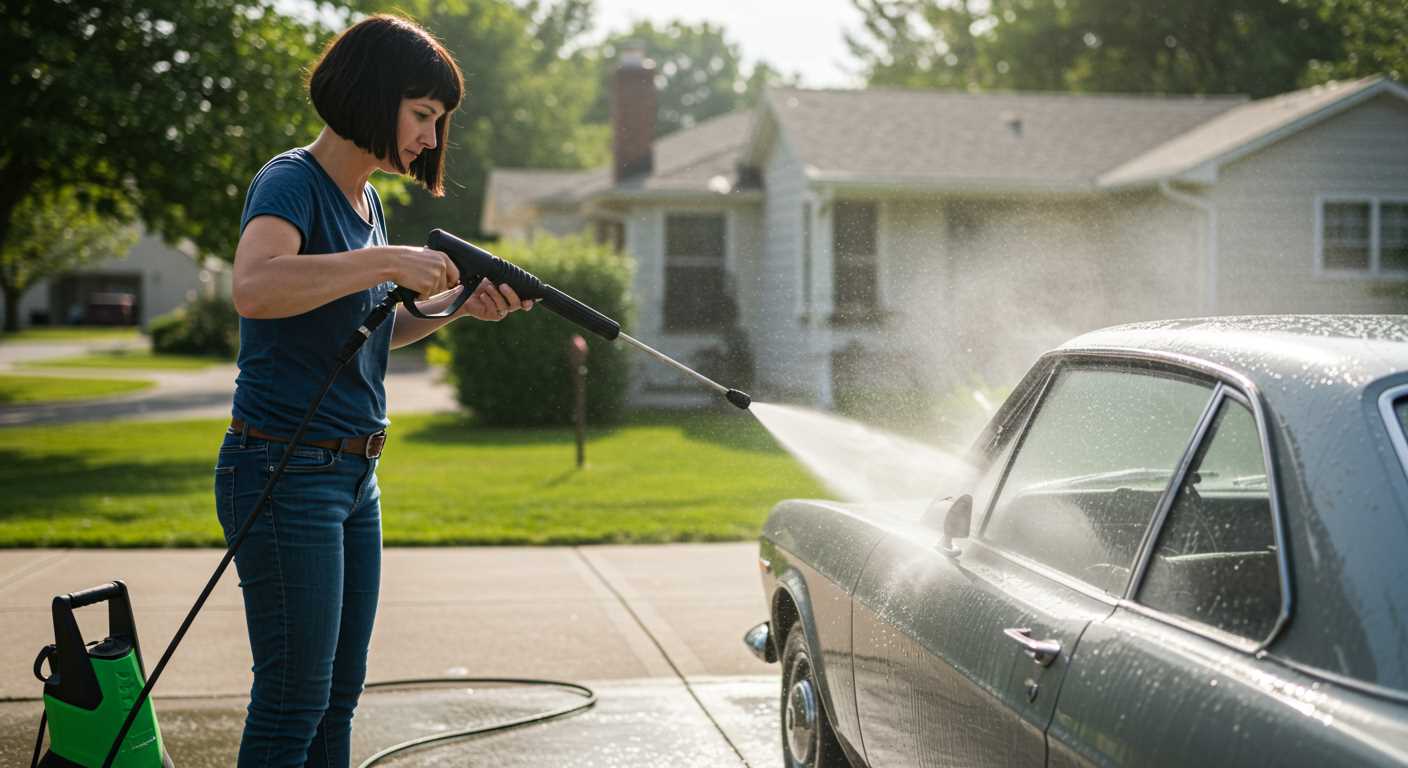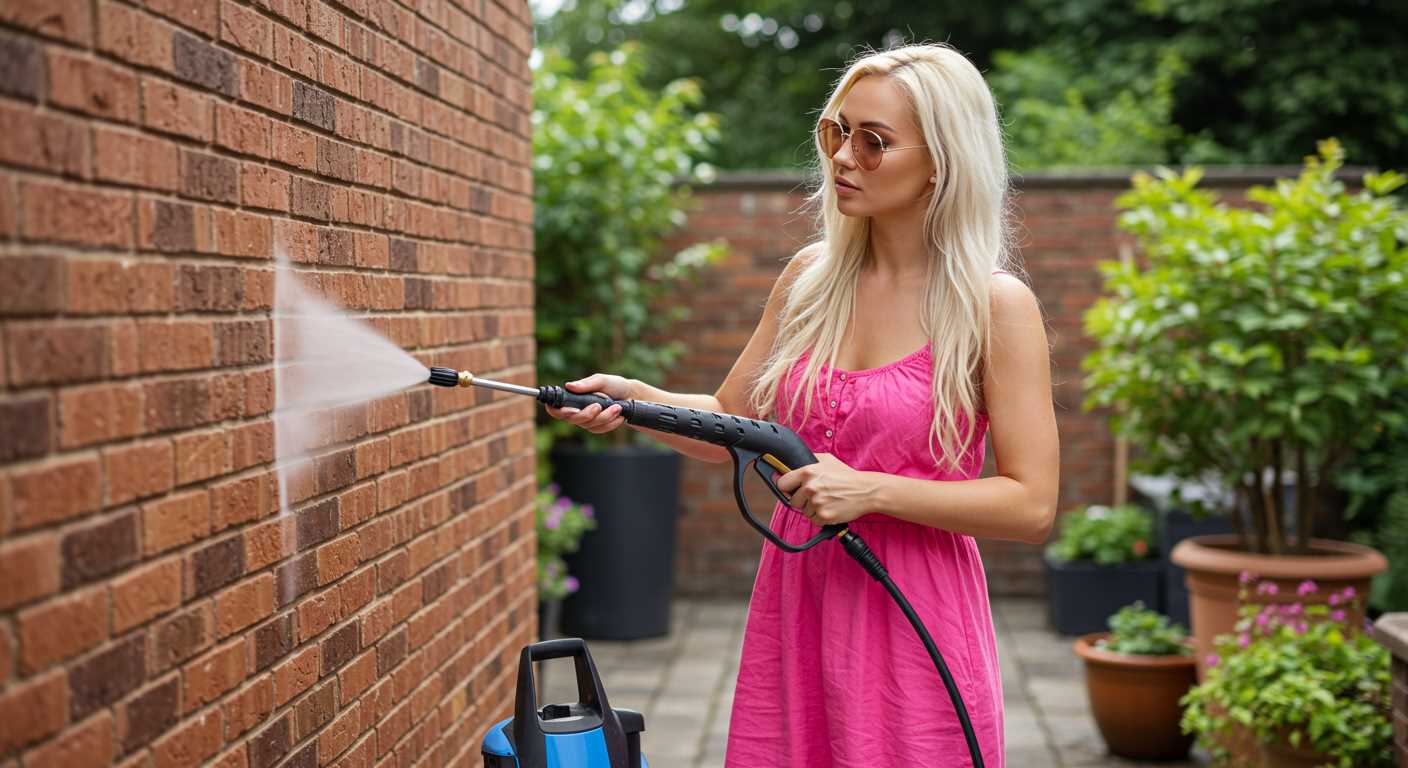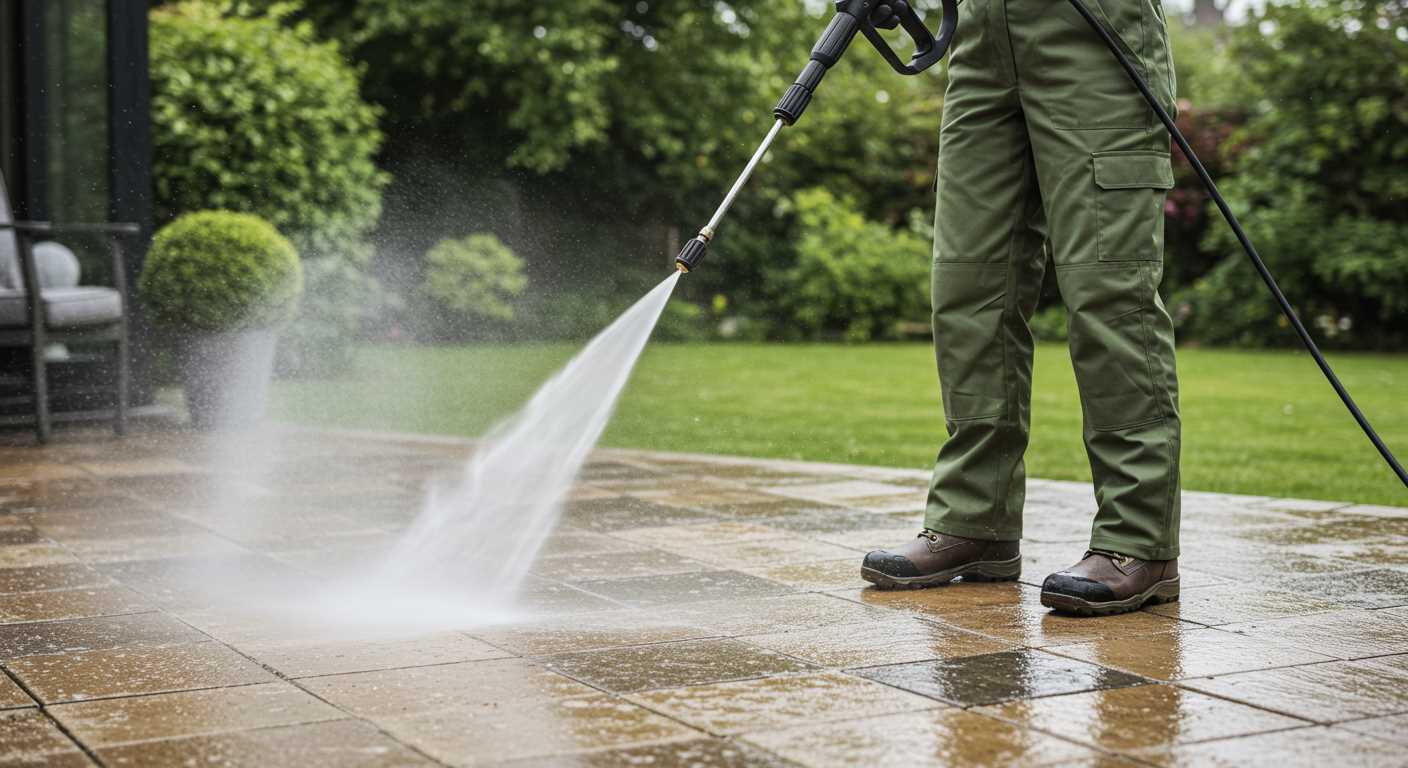



Using high-pressure cleaning devices on vehicles can lead to damage if not done correctly. My experience in the cleaning equipment industry indicates that improper handling, such as aiming the nozzle too closely or using excessive pressure, risks removing paint or causing dents.
To ensure safety while cleaning a vehicle, maintain a distance of at least 2 feet from the surface and opt for a setting no higher than 1200 PSI. This pressure level is typically adequate for removing dirt and grime without harming the paint or trim. Additionally, consider using a wide nozzle tip to disperse the water impact, further reducing the risk of damage.
For sensitive areas such as around windows and seams, avoid high-pressure cleaning altogether. Instead, use a soft cloth and a gentle detergent solution to clean these spots, protecting seals and preventing leaks. After washing, it is advisable to apply a wax or sealant to safeguard the surface against future contaminants.
Evaluating the Impact of High-Pressure Cleaners on Automobiles
Using high-pressure cleaning devices on vehicles can lead to damage if not handled correctly. I recommend maintaining a distance of at least 2-3 feet from the surface of your automobile to prevent any harm to the paintwork or trim. It’s crucial to select a wide-angle nozzle that disperses water more gently than a concentrated point stream.
Concentrated jets can easily chip paint, damage seals, or even dislodge parts. Pay special attention to vulnerable areas such as the undercarriage, where salt and debris accumulate. While it may be tempting to target these spots with high force, a softer approach with standard washing tools is often more beneficial.
Proper Techniques for Using High-Pressure Equipment
Begin at the top of the vehicle and work downward to avoid lifting dirt higher onto clean surfaces. Keep the nozzle moving to avoid prolonged focus on one spot, which can lead to unwanted abrasions. Using a soap pre-treatment before rinsing can help break down grime without excessive force.
Avoid directing the water stream at sensitive areas, such as wheel bearings, electrical components, and door seals. Using moderate pressure settings while cleaning will help preserve the integrity of your vehicle’s finishes and mechanical components.
Impact of Pressure Washers on Car Paint

Using a high-powered cleaning device can significantly affect the protective coating of a vehicle’s surface. It’s crucial to choose the right settings to avoid damaging the finish. I recommend keeping the nozzle at a safe distance from the paintwork, generally around 2-3 feet, to reduce the risk of chipping or peeling.
Recommended Water Pressure
Opt for a machine that allows you to adjust the pressure. A setting between 1200 to 1900 PSI is typically safe for automotive surfaces. Higher settings can strip away wax or sealant, leaving the paint vulnerable to environmental elements.
Technique Matters
When using this equipment, always apply the water in a sweeping motion rather than a concentrated blast. This technique evenly distributes the pressure, minimising the risk of damaging areas with existing chips or scratches. Additionally, avoid directing water into crevices like window seals and lights, as this can lead to water intrusion, promoting rust.
Choosing the Right Pressure Settings for Vehicle Cleaning
Utilising an appropriate pressure setting is crucial for maintaining a vehicle’s exterior. For most cars, a setting between 1200 to 1900 PSI is ideal. Higher pressures can potentially damage sensitive areas, such as plastic trim or rubber seals.
Understanding Nozzle Types
Different nozzles have varying spray patterns that affect the cleaning process. A 25-degree nozzle creates a wider spray, suitable for washing large surfaces, while a 15-degree option concentrates the flow for stubborn grime. Always start off with the broadest angle, adjusting as needed based on the situation.
Distance Matters
Keep the nozzle at least 2-3 feet away from the surface to prevent paint damage. Gradually reducing the distance can help with more stubborn dirt without risking harm. Test the impact from a safe range before getting closer.
Always follow the manufacturer’s guidelines for specific settings and pressure recommendations, ensuring a thorough yet safe clean for your vehicle.
Understanding the Risks of Using Detergents with Cleaning Equipment
When selecting a cleaning solution for your vehicle, always choose products specifically designed for automotive use. Household cleaners or general-purpose detergents can contain harsh chemicals that may strip wax coatings or damage the paint over time.
Potential Damage from Non-Automotive Detergents

Some non-specialised solutions may contain acids or solvents that negatively impact clear coats, leading to fading or discolouration. These products can also cause streaking or leave residues that attract dirt. It’s advisable to avoid anything that isn’t labelled as safe for automotive finishes.
Application Guidelines

For optimal results, it’s important to follow the manufacturer’s instructions regarding dilution ratios and application methods. Misuse can amplify the risks of damage. Always test a small area before applying any detergent thoroughly. Using the right tools, such as a foam cannon, can aid in achieving a thorough cleanse while minimising contact with the surface, thus lowering the risk of abrasion.
What Car Parts Should You Avoid Pressure Washing
Always steer clear of the following components during cleaning to prevent damage:
- Electrical Connections: High-velocity water can infiltrate electrical systems, leading to corrosion and failure.
- Brakes: Avoid directly cleaning brake components as water jets may compromise their effectiveness and create safety hazards.
- Wheel Bearings: Pressurised water can wash out essential lubricants, risking premature wear.
- Exhaust Systems: Direct spraying can force contaminants into the system, affecting performance and durability.
- Seals and Gaskets: Jets can damage gaskets, causing leaks and costly repairs. Focus on cleaning surrounding areas gently.
- Paint and Clear Coats: High pressure can strip or chip the paint, requiring refinishing.
- Windows and Mirrors: Spray can create streaks or damage, impairing visibility.
- Suspension Parts: Water can cause rust and reduce longevity if it penetrates sensitive areas.
Always opt for lower pressure settings and use a gentle approach on sensitive areas to preserve vehicle integrity while cleaning.
Comparing Pressure Cleaners to Hand Cleaning for Vehicle Maintenance
Hand cleaning offers a detailed touch that mechanised methods cannot replicate. This approach allows you to feel the surface and identify areas needing extra attention, which can be crucial for maintaining the paintwork.
Advantages of Hand Cleaning
- Personal touch: You can assess the condition of the paint and wheels directly while scrubbing.
- Control over pressure: Adjust the force applied based on the area, especially on delicate parts.
- Cleaning agents: You can choose biodegradable and gentle soaps to protect the finish.
- Less risk of damage: Lower likelihood of inadvertently harming seals or crevices.
Benefits of Mechanised Cleaning
- Time-saving: Covers more surface area quickly, especially with stubborn dirt.
- Efficient for large build-ups: Ideal for removing grime and mud after off-road trips.
- Water conservation: Certain models are designed to use less water than traditional washing.
- Consistency: Maintains a uniform cleaning intensity across the vehicle.
Choosing between these methods depends on specific needs. For regular maintenance, hand washing is recommended for maintaining aesthetics and paint integrity. For heavy-duty clean-ups, mechanised options can provide quicker results, but caution is necessary to avoid potential damage.
Common Mistakes When Using a Pressure Device on Vehicles
Avoid using a narrow nozzle that concentrates the spray too much, as this can damage surfaces. Opt for a wider spray pattern to reduce risk.
Neglecting to keep a safe distance from the vehicle can lead to significant paint damage. Maintain at least 18 inches between the nozzle and the surface while operating.
Using excessive force or incorrect angles while cleaning can result in unwanted scratches or dents. Always approach surfaces with a gentle touch and at a 45-degree angle.
Ignoring areas like wheel wells, undercarriage, and sensitive components can lead to long-term neglect. Comprehensive cleaning ensures that dirt and grime don’t accumulate in these hidden spots.
Over-application of cleaning agents can create a sticky residue if not rinsed properly. Dilute detergents per manufacturer instructions and rinse thoroughly afterward.
Not pre-rinsing the vehicle is a common error that can lead to scratching the paint. Always rinse loose dirt prior to deep cleaning.
Failing to check for loose trim or parts can result in them being dislodged during the cleaning process. Inspect the vehicle beforehand to secure or avoid these components.
| Mistake | Impact | Tip |
|---|---|---|
| Narrow nozzle use | Potential paint damage | Choose a wider spray pattern |
| Too close to surface | Scratches and dents | Maintain 18 inches distance |
| Incorrect angles | Paint erosion | Clean at a 45-degree angle |
| Neglecting hard-to-reach areas | Accumulation of dirt | Thoroughly inspect all areas |
| Over-using detergents | Sticky residue left | Follow dilution instructions |
| No pre-rinse | Increased scratching | Rinse loose dirt first |
| Loose parts oversight | Damage to trim | Inspect and secure parts |
How to Properly Use a Pressure Washer on Your Vehicle
Select a low-pressure nozzle, ideally between 25 and 40 degrees, to ensure a gentle spray that won’t damage the surface. Maintain a distance of at least 2 feet from the surface while cleaning.
Begin from the top, working downwards to allow dirt and grime to rinse away effectively. Avoid circular motions; instead, use straight lines to prevent swirl marks.
Before applying any cleaning solution, perform a preliminary rinse with plain water to remove loose debris. If using detergent, choose a product specifically formulated for automotive surfaces. Avoid any harsh chemicals that could harm paint or seals.
Always follow the manufacturer’s recommendations for dilution ratios when mixing detergents. A solution that is too strong can leave residues or damage coatings.
Make sure to cover sensitive areas like the engine bay and electronics with plastic bags or wrap to protect them from water intrusion. After cleaning, thoroughly remove any residues that may remain on the vehicle’s surface.
If you’re rinsing undercarriage areas, ensure your setup allows for safe drainage, avoiding water pooling that could lead to rust.
After cleaning, dry the vehicle with a soft microfiber towel to prevent water spots. This final step will help maintain a polished appearance and protect the finish.
Regularly inspect your equipment for any wear and tear. Nozzles should be free from clogs, and hoses should be checked for leaks to avoid unexpected issues during use.
Alternative Cleaning Methods for Maintaining Your Vehicle

Hand washing is one of the most effective methods for keeping a vehicle clean. Using a high-quality car shampoo, a microfiber cloth, and a bucket of water allows for a controlled and gentle wash, reducing the risk of damage to the paintwork. Make sure to rinse and wash in sections to prevent soap from drying on the surface.
Steam Cleaning
Steam cleaning employs heated water vapour to remove dirt without harsh chemicals. It’s particularly effective for interiors, eliminating stains and sanitising surfaces. Ensure the steam cleaner is suitable for automotive use and follow the manufacturer’s guidelines to avoid any issues with sensitive components.
Detailing Clay
Using a clay bar is an excellent way to prepare the surface before polishing or waxing. This method removes embedded contaminants, such as tar and brake dust, ensuring a smoother finish. It’s ideal for those who want to maintain a glass-like surface without the risk of scratches from harsher methods.
Microfibre towels and wash mitts should be utilised to avoid swirl marks during cleaning. Additionally, applying a ceramic coating can protect the vehicle’s surface. This provides a resilient barrier against contaminants, making future cleaning easier while giving the paint an enhanced shine.
For those who prefer minimal contact, opting for a touchless cleaning system can also be beneficial. These setups use foam and high-pressure jets without physically scrubbing the vehicle, lowering the risk of unintentional scratches.
Incorporating a regular schedule for maintenance, alongside these gentler cleaning methods, will ensure your vehicle remains in top condition while avoiding potential damage associated with harsher alternatives.
FAQ:
Can using a pressure washer damage my car’s paint?
Yes, using a pressure washer can potentially damage your car’s paint if not done carefully. High-pressure water jets can strip away protective layers and paint, especially if the nozzle is held too close to the surface or used at a too high pressure. Ideally, it’s best to maintain a safe distance and use a lower pressure setting. Additionally, make sure to use the appropriate nozzle attachment to minimise any risk of damage.
What are the risks of using a pressure washer on my car?
The main risks associated with using a pressure washer on your car include damage to the paintwork, dislodging trim or moulding, and forcing water into sensitive areas like door seals and engine compartments. These risks can be mitigated by using a suitable pressure setting and accessories. It’s also unwise to wash a car that is hot or exposed to direct sunlight, as this can cause soap to dry too quickly and leave stains.
Are there safer alternatives to pressure washing my car?
Yes, there are several safer alternatives to pressure washing. Hand washing with a mild car shampoo and a soft sponge or mitt is a popular method, as it allows for more control and reduces the risk of damage. Using a foam cannon attached to a garden hose can also provide a gentle wash while still delivering enough cleaning power. Another method is a waterless wash, which involves using a special solution in spray form that cleans the surface without the need for water.
How often should I wash my car if I choose to use a pressure washer?
If you decide to use a pressure washer, washing your car every two to four weeks is typically advisable, depending on your environment. Frequent washing helps remove dirt and contaminants that can harm the paint. However, be mindful of the washing technique you use. If pressure washing is your preferred method, ensure you take precautions to protect your car’s surfaces, such as using a lower pressure setting and avoiding abrasive nozzles.










